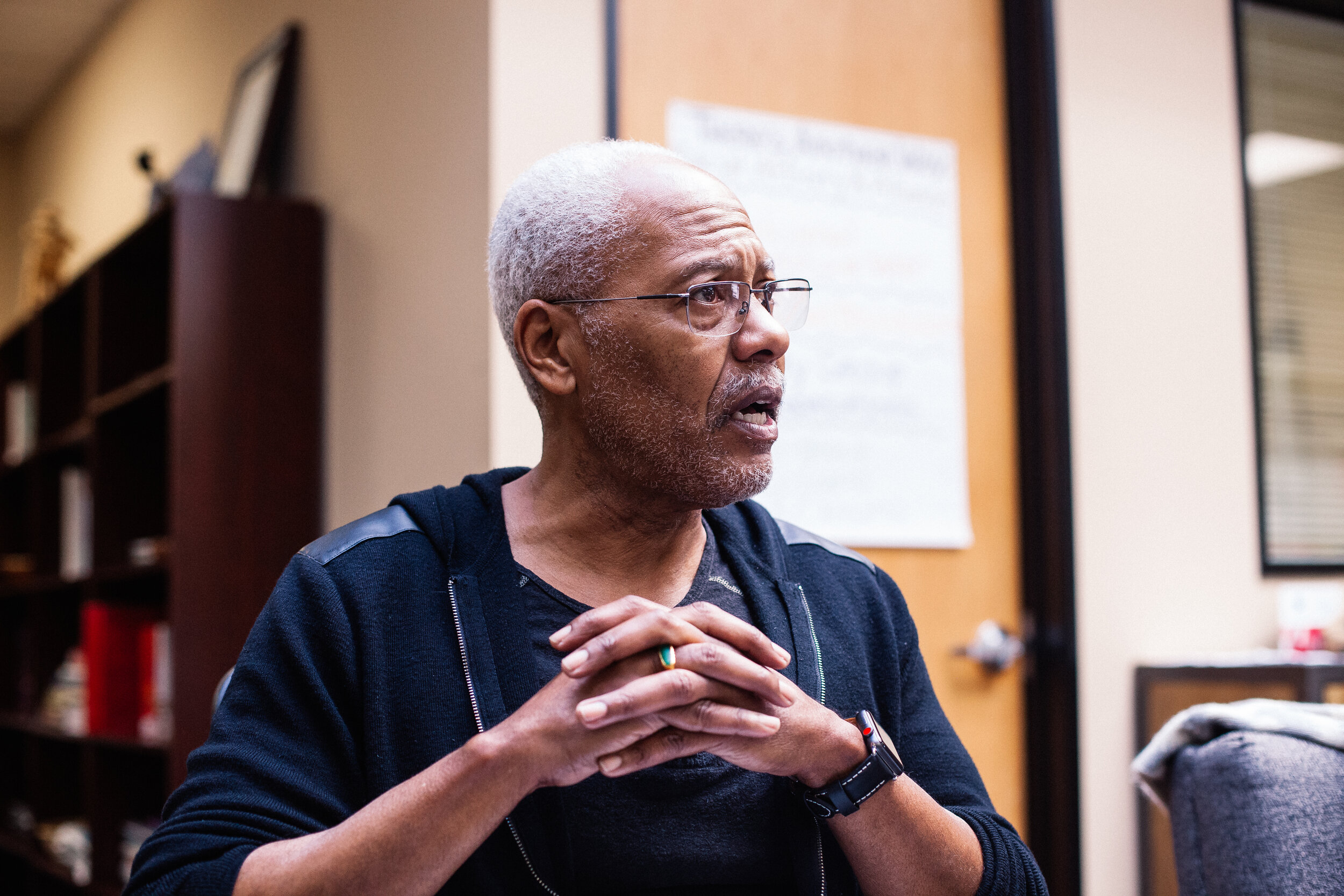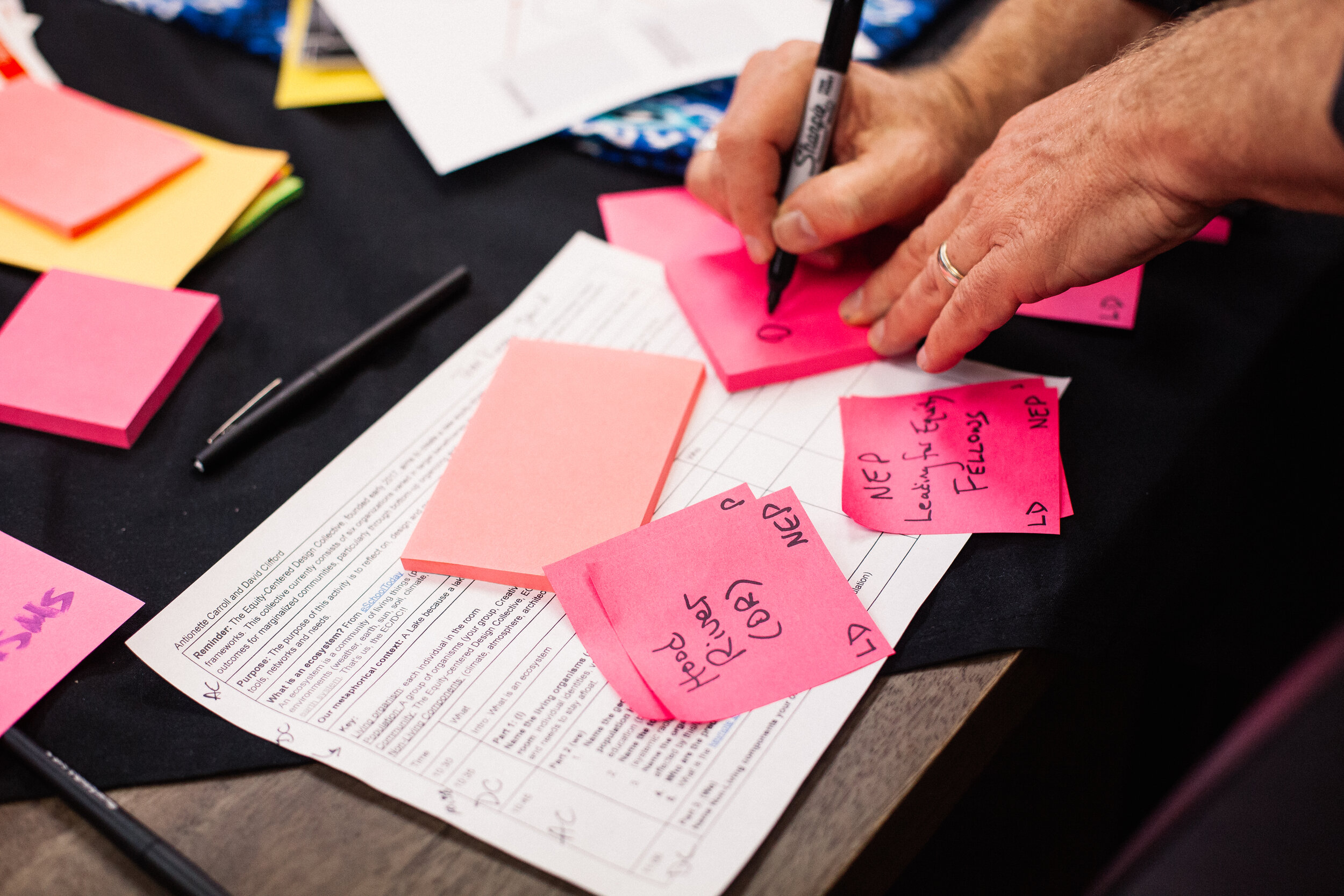
LIBERATORY DESIGN
Mindsets and Modes to design for equity
What is Liberatory Design?
We are living in challenging times that our past experiences and training has not sufficiently prepared us for. Too often, well intentioned equity and design efforts do not succeed—and even produce unintended consequences. This can create frustration, hopelessness and cynicism. Liberatory Design was built for these times.
Liberatory Design is a creative problem-solving approach and practice that centers equity and supports us to design for liberation. It is made up of mindsets and modes. Mindsets invoke stances and values to ground and focus our design practice, and modes provide process guidance for our design practice. Liberatory Design generates self-awareness to liberate designers from habits that perpetuate inequity, shifts the relationship between the people who hold power to design and those impacted, fosters learning and agency for those involved in and influenced by the design work, and creates conditions for collective liberation.
Why Liberatory Design?
Liberatory Design builds on the legacy of best practices from fields like design thinking, complexity theory, organizing, equity, restorative healing and beyond. The power of Liberatory Design comes from its ability to help us better understand challenges in highly complex interconnected systems, to see ways systems of oppression are impacting our context, to root our decision-making in our values, to combat status quo behavior with deep self-reflection, and to learn and change in a fast-moving, meaningful way. In situations as complex as equity challenges, the way forward is led by noticing, experimenting, learning, reflecting, and repeating. Liberatory Design is structured to build your equity leadership capacity to create real change with the communities you care deeply about. The process itself, as well as the outcomes, are building towards greater collective liberation.
Get a Liberatory Design Deck!
Download a free PDF here! If you would like to purchase physical copies, they will be available soon on the following portals:
The Co-Creation Process
The co-creators of Liberatory Design first convened in 2016 to explore the intersection of equity and design. They explored questions like, “how can design support equity practitioners to take action when they feel overwhelmed by the complexity of equity challenges?” and “how can design be rooted in understandings of power, oppression, and liberation to design liberation-rooted change?” The group presented the first prototypes of the frameworks and card deck at SXSWedu 2017. In the years following, the co-creators experimented with, adapted, and grew Liberatory Design within their own organizations. They were delighted to hear stories from people across the world who were practicing Liberatory Design in their contexts. In 2019, the team reconvened to create an updated version of the public-facing card deck. It was released in April 2021. The co-creators continue to practice and evolve Liberatory Design in their respective contexts and love hearing from others using it.



The 2021 Version
Originally based on the 5 hexagons of design thinking, the latest visual representation of Liberatory Design is inspired by a flower with petals that converge in the center. The flower exists among others within an ecosystem, and the practitioners of Liberatory Design create connections through pollination. In this graphic, the Notice and Reflect modes are placed at the centers of the flower– we encourage you to return to this center each time you pivot to a new mode. We also want to emphasize the graphic’s non-linearity; the petals can be visited in any order to support your unique context.
Co-Creators
Contact Us
To find contact information for the co-creators, click on their photos above.
How to Credit the Work
This deck is under the Creative Commons license: Attribution-NonCommercial-ShareAlike 3.0 Unported (CC BY-NC-SA 3.0). If you give appropriate credit, include a link to this license, indicate if any changes were made, and use this same CC license, then...
You can use and share the content
You can adapt it and build on it
You can’t suggest the licensor endorses you or your use, and you can’t use it for commercial purposes.
Thank you for honoring Liberatory Design’s roots, and we can’t wait to see what you do with it!
We hope Liberatory Design supports you to catalyze equity design across the globe! To honor the co-creators when using Liberatory Design, please use this language:
“Liberatory Design (http://www.liberatorydesign.com) is the result of a collaboration between Tania Anaissie, David Clifford, Susie Wise, and the National Equity Project [Victor Cary and Tom Malarkey].”
When referencing the work in a citation, please use the following format:
“Anaissie, T., Cary, V., Clifford, D., Malarkey, T. & Wise, S. (2021). Liberatory Design. http://www.liberatorydesign.com.”









